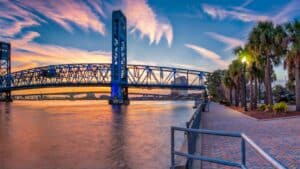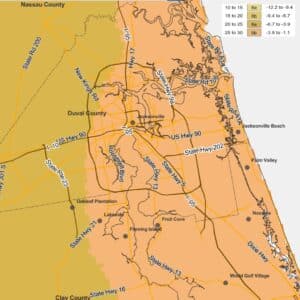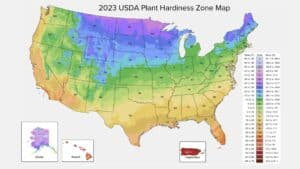
New USDA Plant Hardiness Zone Map Meets El Niño
Warmer Winter, Wetter Spring?
The new USDA Plant Hardiness Zone Map update, released on November 15, 2023, paints a warmer picture for much of the country, with half the nation shifting to a higher hardiness zone. This shift, particularly relevant for Jacksonville, Florida, comes amidst concerns about the potential for an El Niño-influenced winter and wetter spring.
Jacksonville’s Zone Shift and El Niño’s Potential Impact:
Previously split between zones 8b and 9a, Jacksonville is now split between zone 9a west and 9b east of State Highway 9A, with the new 8b zone migrating nearly 200 miles north to near Macon, Georgia. While this upward revision reflects warming trends, the potential for an El Niño event adds a layer of complexity to consider for the health of our landscapes and gardens.

El Niño, characterized by warmer Pacific Ocean temperatures, can influence weather patterns across the globe, often bringing increased rainfall to the southeastern United States, including Florida. “More turbulent wet weather in the Sunshine State is possible, however, with a separate forecast predicting most of Florida as having an 80 to 90 percent chance of above-average rainfall, according to Newsweek. “That prediction may not be welcomed by residents in cities like Fort Lauderdale, Florida, as NBC Boston named it the wettest city in America this year.” This could lead to wetter-than-average spring conditions in Jacksonville, potentially impacting planting times and plant selection.
Combining Hardiness Zones with Rainfall Predictions:
While the new USDA plant hardiness zone map provides valuable guidance on cold tolerance, it’s crucial to consider Jacksonville’s specific climate and potential El Niño effects. Here are some tips:
Factor in rainfall: When choosing plants, consider not just their cold hardiness but also their tolerance to moisture. Opt for varieties that thrive in wetter conditions if El Niño predictions hold true.
Monitor weather forecasts: Stay informed about the latest El Niño developments and adjust your planting plans accordingly. Delay planting frost-sensitive species if heavy rains are expected.
Seek local expert advice: Consult with the University of Florida Duval County Extension Office and our landscape architects and designers for plant varieties suited for Jacksonville and the beach’s specific microclimates and potential El Niño impacts.
Remember, the USDA Plant Hardiness Zone Map is a general guideline, and microclimates within your area can create variations in temperature and rainfall. Combining this information
with El Niño forecasts and local expertise enables you to make informed decisions about plant selection and care, ensuring your Jacksonville garden flourishes throughout the year. 
From our office in Atlantic Beach and satellites in Jacksonville and St. Johns County, Rockaway Inc proudly serves both commercial and residential landscape design, maintenance, lawn care, irrigation, and outdoor living carpentry client needs in Jacksonville, St Augustine, Atlantic Beach, Neptune Beach, Jacksonville Beach, Ponte Vedra, Nocatee, St. Johns, and Fernandina Beach.
